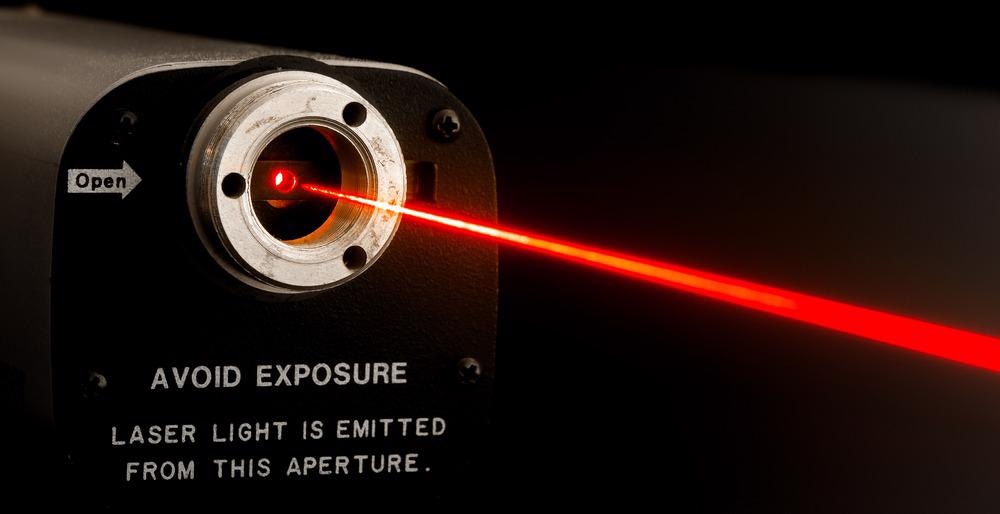In recent years, topological photonics has quickly become one of the most active areas of optics research. All the work happening in this field is even helping to guide the work of topological physics. In just ten years, topological photonics has emerged as an excellent platform for investigating hypotheses originating in condensed matter physics.

Image Credit: Doug McLean/Shutterstock.com
Topological photonics has initiated the development and exploration of new fundamental ideas in its own field. The investigation of such ideas has led to numerous avenues of research opening up, with the potential to establish real technologies for use in a multitude of applications.
Here, we look at one particularly recent development in topological photonics, where scientists from Israel and Germany have successfully created a platform where vertical-cavity lasers combine to act together as a single laser. The groundbreaking research has resulted in developing a robust and highly efficient laser, which may have applications in a range of sectors, including medicine and healthcare, and communications.
What are Topological Insulator Lasers and Why are they Important?
Topological insulator lasers are those with a lasing mode that exhibits topologically protected transport. This configuration allows light to propagate in a unidirectional fashion along the edges of the cavity, making it resistant to scattering and disorder, and unaffected by the shape of the cavity’s edges.
These lasers have already become vital to the applications of spintronic devices and dissipationless transistors for quantum computers. The first topological insulator that was ever discovered: the integer quantum Hall effect, is essential to the functioning of quantum computers. For this reason alone, topological insulator lasers are incredibly important, given the potential of quantum computers to drastically improve the sectors of clean energy, pharmaceuticals, security, and the chemical industry.
In addition, topological insulator lasers are also vital to the function of everyday devices such as cell phones and car sensors. They are also fundamental to data transmission via fiber optics. All such devices utilize Vertical-Cavity Surface-Emitting Lasers (VCSELs), a class of semiconductor laser that is deeply integrated within our daily technology.
Widely used VCSEL devices face a significant limitation in that the tiny size of the devices limits the power that they can generate.
In the last few years, scientists have strived to establish a system that enhances the power of VCSEL devices. One key idea that has been pursued is that of combining numerous VCSELs so that they act as one single, more powerful laser. However, research efforts up until this year had yielded disappointing results.
Finally, a team of researchers from institutions in Israel and Germany was able to achieve this by placing the VCSELs on the chip in a unique geometrical arrangement that forces the light to move in a single, specific path. This photonic topological insulator platform is groundbreaking for the field and will likely be leveraged in several applications.
Topological Vertical Cavity Laser Arrays
In a paper published in September in the journal Science, a team of Israeli and German scientists describes how it developed a platform that forces an array of vertical-cavity lasers to behave as a single laser. The technology, which encompasses a laser network the size of a grain of sand, is revolutionary and stands to drastically further the field of topological photonics.
The study demonstrated a topological insulator (VCSEL) array which was able to force all emitters to behave as a single laser. The team showed that each VCSEL, which emits light vertically, can be combined with others so that the entire array emits light at the same frequency and displays interference, demonstrating the mutual coherence of the emitters.
The experiments outlined in the research paper show that the topological transport of light is incredibly powerful. Usually, light spends a significant amount of time oscillating vertically, however, with small in-plane coupling, the array is forced to act as a single laser.
As a result, the team had developed a compact, efficient, and powerful laser that is undisturbed by defects or altering temperatures. Additionally, the topological principle of the laser works for all wavelengths, meaning that it can work in a variety of materials, opening up many opportunities for the development of future applications.
More research is needed to develop such applications as the exact arrangement and number of lasers would be entirely dependent on the purpose of the application.
Future Directions for Next-Generation Laser Technology
With this research, topology, which was originally a branch of mathematics, has further cemented itself into the field of optics by offering a cutting-edge new tool for controlling and improving the properties of lasers.
In the coming years, we will likely see numerous future technologies developed off the back of this breakthrough, particularly impacting the sectors of medical devices and communications.
References and Further Reading
Tiny Lasers Acting Together as One: Topological Vertical Cavity Laser Arrays. (2021) [Online]. Lab Manager. Available at: https://www.labmanager.com/news/tiny-lasers-acting-together-as-one-topological-vertical-cavity-laser-arrays-26764
Dikopoltsev, A., Harder, T., Lustig, E., Egorov, O., Beierlein, J., Wolf, A., Lumer, Y., Emmerling, M., Schneider, C., Höfling, S., Segev, M. and Klembt, S., 2021. Topological insulator vertical-cavity laser array. Science, 373(6562), pp.1514-1517. https://www.science.org/doi/10.1126/science.abj2232
Harari, G., Bandres, M., Lumer, Y., Rechtsman, M., Chong, Y., Khajavikhan, M., Christodoulides, D. and Segev, M., 2018. Topological insulator laser: Theory. Science, 359(6381). https://www.science.org/doi/10.1126/science.aar4003
Segev, M. and Bandres, M., 2020. Topological photonics: Where do we go from here?. Nanophotonics, 10(1), pp.425-434. https://www.degruyter.com/document/doi/10.1515/nanoph-2020-0441/html
Disclaimer: The views expressed here are those of the author expressed in their private capacity and do not necessarily represent the views of AZoM.com Limited T/A AZoNetwork the owner and operator of this website. This disclaimer forms part of the Terms and conditions of use of this website.